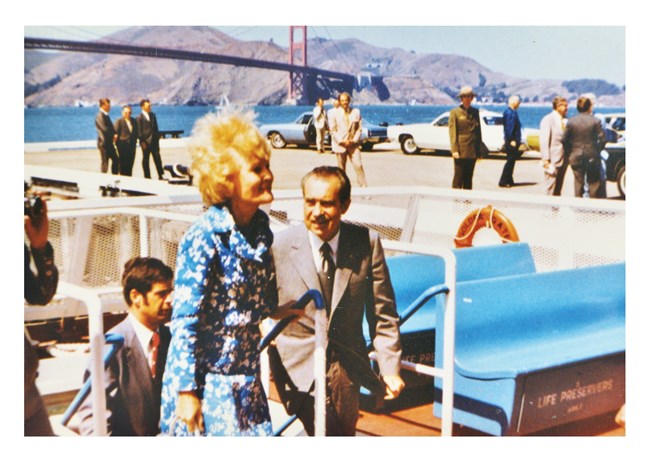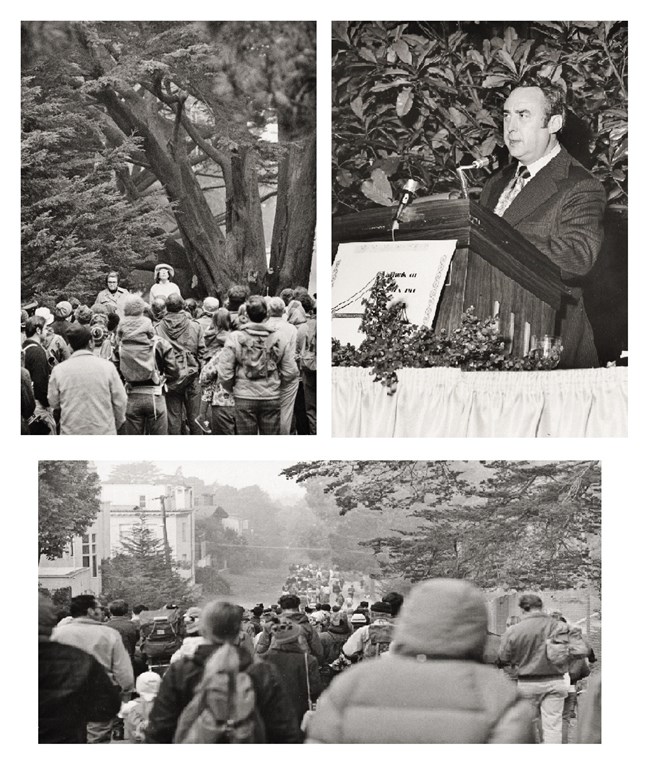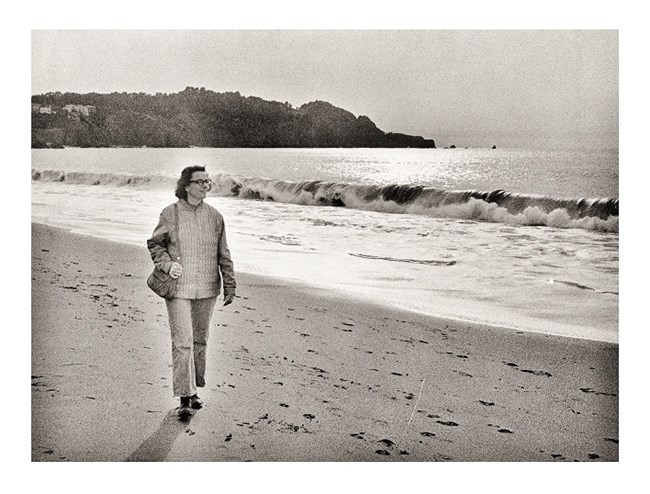
Parks for the people, where the people are
In a time when the population and growth of the San Francisco Bay Area was increasing rapidly, there was also growing concern for the environment and the need to have open space available to local urban populations. Corporations were seeking to build new developments in the Marin Headlands and highways were proposed to run through wild ridgelines in San Mateo County. Advocacy groups such as the People for a Golden Gate National Recreation Area, headed by Dr. Edgar Wayburn and Amy Meyer, Headlands, Inc., and the later Peninsula Open Space Trust, along with U.S. Congressman Phillip Burton sought to block construction. Initially the 1969-1971 Indian Occupation at Alcatraz Island placed areas in the Bay Area under government scrutiny and questions arose as to what would become of the former prison. When the government sent teams to survey the possibilities for Alcatraz they simultaneously became more aware of the amount of open space available so near an urban area as well as the local population's intentions of keeping it intact. Using the public's preservation momentum, and building off of nearly 20 years of ideas for a park at Golden Gate, Congressman Phillip Burton took the findings of the federal teams and the national park proposal to the Congressional floor; by use of his charm, muscle, and political savvy, Burton moved the park into reality in record time. 
When creating the boundaries of GGNRA, legislators concentrated on retaining the most open space and protecting areas from future development; this included military lands still occupied by the U.S. Army. However, even before the GGNRA's establishment was finalized, new additions to the park were being planned and the lines of the park were extended. The national park unit would protect important habitat for hundreds of native plants and wildlife, including over 35 threatened or endangered species, as well as preserve significant cultural elements, safeguard prehistoric Coastal Miwok and Ohlone sites, record over 200 years of military defense, present coast artillery developments from cannon to missiles, interpret an inhospitable prison, and stand as example of the conservation movement. With the GGNRA the National Park Service was breaking new ground, never before had an open space unit been so close to such a densely populated area and neither had this level of public involvement come into the creation of a national park area. Once the park was established, a Citizen's Advisory Commission was appointed to assist and recommend future actions, to filter and organize the wants and needs of the population, acting as a partner with the National Park Service to develop a recreation area that could be used by all while being managed and protected where appropriate. In order to maintain such a large area with so many historic structures, the Citizen's Advisory Commission worked to find partners that shared or enhanced National Park Service values of education, preservation, and interpretation and who would repurpose structures and spaces. Instead of allowing historic buildings to fall into disrepair and remain unoccupied these organizations would work within the structures, keep up maintenance, and retain the historic landscape. These partners include organizations like NatureBridge, Headlands Center for the Arts, the Fort Mason Center, and the Marine Mammal Center. One of the largest park partners, and the official support group of GGNRA, is the Golden Gate National Parks Conservancy. The Conservancy assists the GGNRA with the creation of programs, grant development, volunteer organization, managing bookstores, and habitat restoration throughout the park. With the help partners such as these GGNRA is able provide a wider selection of visitor experiences. 
Today, 50 years after the original legislation of Golden Gate National Recreation Area, lands are still being added to the park and millions of visitors each year make GGNRA one of the most visited units in the National Park Service. Examine the GGNRA within each county, Marin, San Francisco, and San Mateo, and describe: Where each area is located; When each area was added to the GGNRA; How the acquisition came about; Who was involved; and Why the natural and cultural resources merit preservation as a national park. Next: Marin County |
Last updated: March 11, 2024
